Dream Boats
Varying in size, shape, and functionality, these specialized watercraft have one thing in common—they help you get to where the birds are
Varying in size, shape, and functionality, these specialized watercraft have one thing in common—they help you get to where the birds are

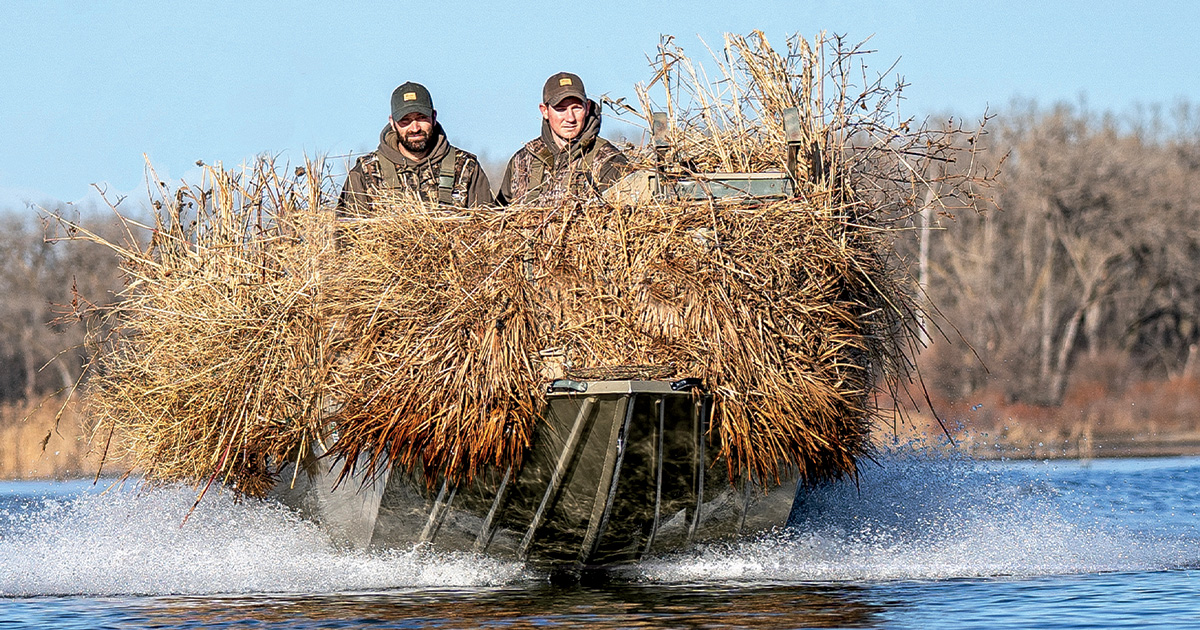
My first duck boat was a 10-foot aluminum johnboat that my hunting partners and I found in the Wabash River bottoms when we were 16 years old. It was half buried in a sandbar and appeared to have been there a long time. After salvaging it, we hosed off the mud and touched it up with a few cans of camo spray paint. The lightweight, flat-bottom boat was perfect for the small ponds, creeks, and marshes we hunted in those days. We even used it once as a shelter during a sudden thunderstorm.
Since those early adventures in central Indiana, I’ve hunted in all manner of boats in pursuit of waterfowl, from one-man pirogues in south Louisiana to airboats on the Great Salt Lake to an 18-foot Lund Alaskan V-hull off the Maine coast. Each of them was well designed for certain environments, but clearly none of them would work everywhere. A pirogue would be a poor (and possibly fatal) choice for hunting divers on the big waters of Lake Erie. Likewise, you won’t have much luck jump-shooting wood ducks on a small creek or slough from a 21-foot center console with a 150-horsepower outboard. In other words, waterfowl hunters need boats that are designed to handle the specific waters and conditions where they hunt. We asked several expert waterfowlers about the boats they use to pursue ducks and geese in a variety of classic habitats. Check out their responses, and you just might pick up a few ideas for your next duck boat.
Phil Kahnke, South Dakota: Alumacraft 1860 modified V-hull with boat blind
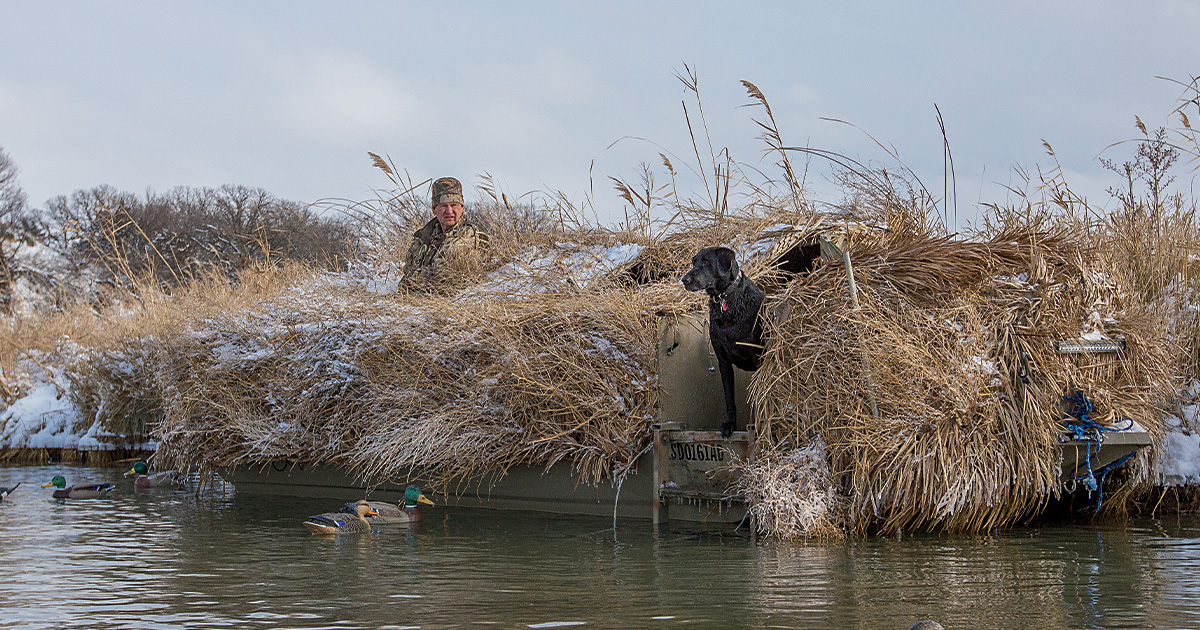
The large rivers and lakes of eastern South Dakota offer some of the nation’s best waterfowl hunting, especially late in the season, when bitter-cold temperatures freeze surrounding marshes and potholes. But to safely hunt these windswept waters you need a seaworthy boat. You also need a good boat blind to conceal you in open prairie environments. Phil Kahnke has this all figured out. Several years ago, he custom-built a blind on an Alumacraft 1860 modified V-hull equipped with a Yamaha F70 outboard. The interior of the boat is almost completely enclosed within the blind, providing both concealment and protection from the elements.
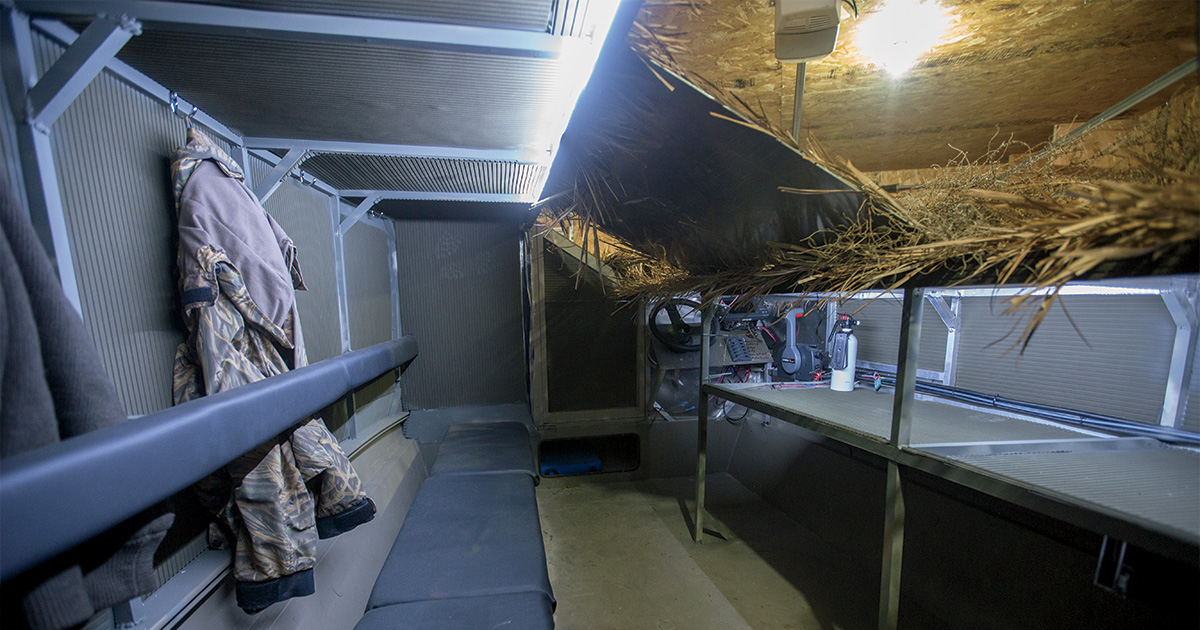
Kahnke’s blind covers almost the entire boat, providing excellent concealment and keeping hunters and dogs out of the weather.
“I needed a boat that was big enough to safely handle big water and also serve as a stable shooting platform for several hunters,” Kahnke explains. “I typically hunt when the temperature is below freezing, so I designed the blind to be as warm as possible while also providing good concealment. It’s a great setup for what I do.”
The blind’s shooting holes are two feet in diameter and have removable covers. The blind also has a spot for a retriever and plenty of space for several dozen decoys, a camp stove, and portable propane heaters. “I’ve hunted with this setup for seven years,” Kahnke says. “It’s about as comfortable as it gets, and by using RealGrass camo mats as a base, it doesn’t take long to brush the blind with natural vegetation to match the cover wherever we are hunting.”
Features & Accessories:
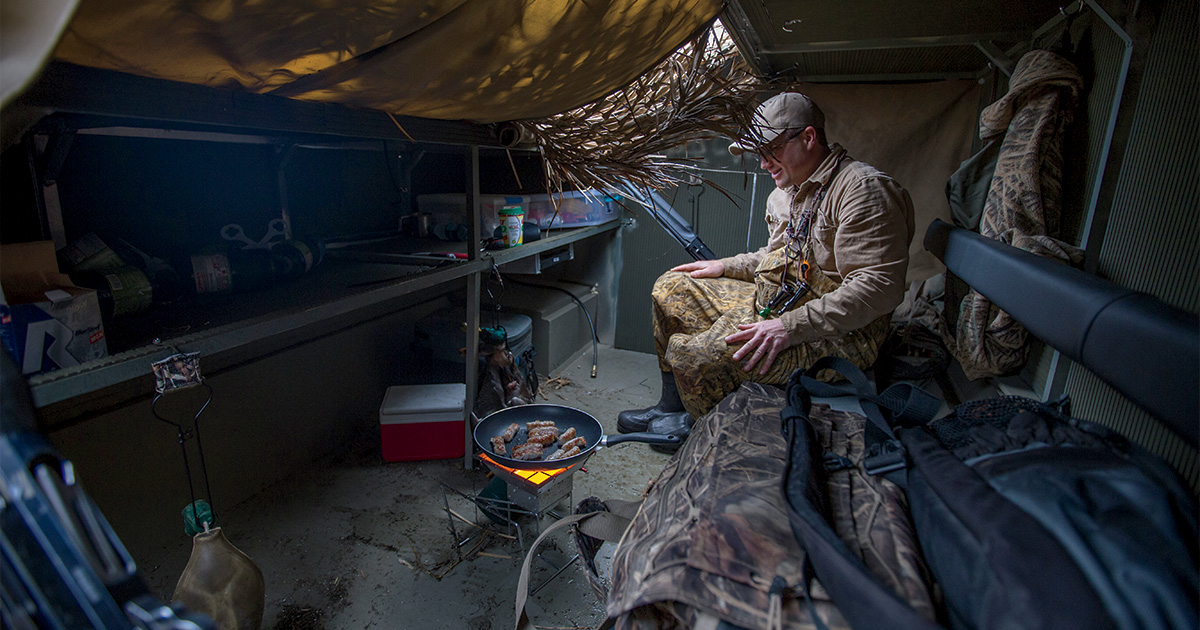
Creature comforts, like propane heaters, comfortable seats, and a hot breakfast, make for happy hunters on cold mornings.
Ricky Nicholas, Louisiana: 1860 GatorTail Extreme Series Surface Drive
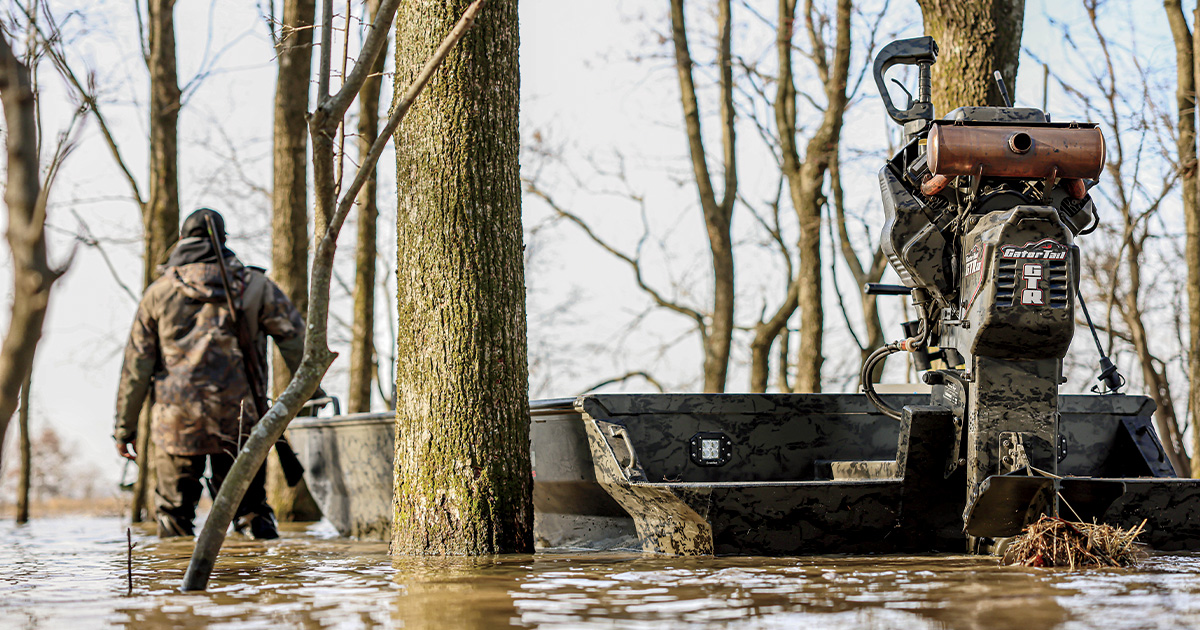
Versatility is the key to Ricky Nicholas’s hunting success. A member of the 24.7 hunt crew, he spends most of his time chasing ducks in the coastal marshes near his home in southwest Louisiana, but he also regularly travels to hunt rivers in Arkansas and Oklahoma. To effectively access these diverse habitats, Nicholas needs a boat that can run long distances at high speed in open water and also power through extremely shallow areas preferred by feeding and loafing dabbling ducks. GatorTail’s 1860 Extreme Series surface drive boat, paired with the company’s GTR40XD mud motor, fits the bill perfectly.
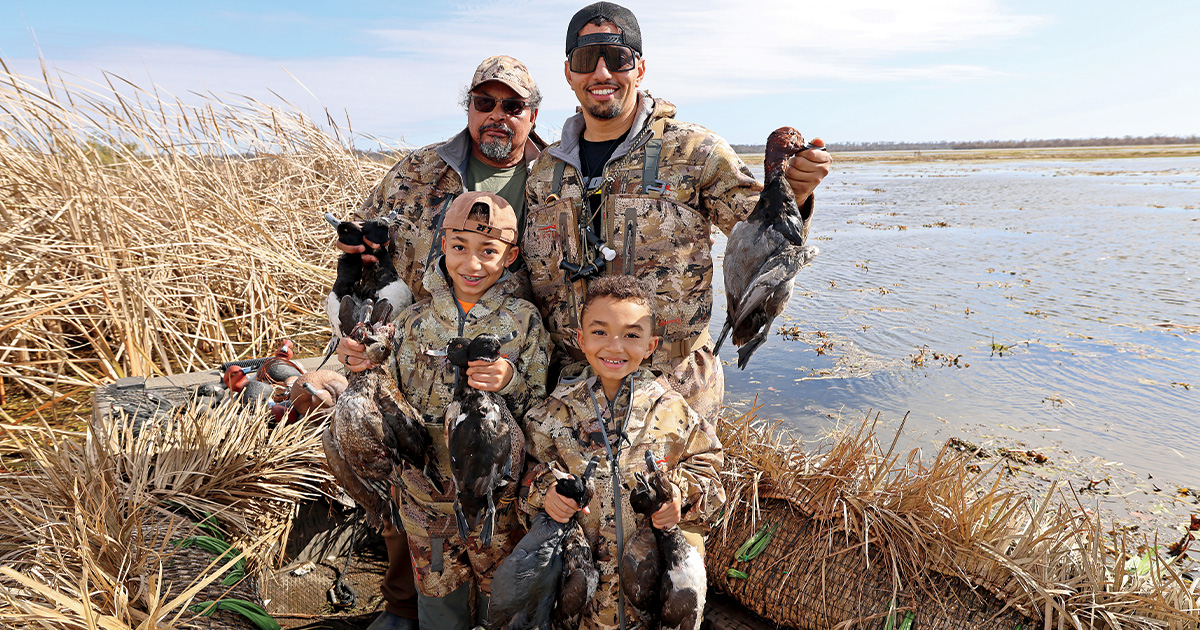
A removable pop-up blind keeps Nicholas and his hunting buddies concealed in the Louisiana marshes.
“In Louisiana, the large, open floor plan of the 1860 allows me to haul lots of decoys, sleds, and gear to hunt deltas, marshes, and open bays,” Nicholas says. “The boat’s true flat bottom also allows it to perform well on Oklahoma mudflats. And in Arkansas flooded timber, the optional pointed bow helps you navigate through the timber on your way to the hole. A pointed bow is far more forgiving if you collide with any trees.”
Nicholas mainly hunts with his two young sons in Louisiana and no more than two other hunters when he’s with the 24.7 hunt crew in Arkansas or Oklahoma. He uses a pop-up blind in the Louisiana marshes, but he removes the blind when he’s on the road, which creates more room for hunters, decoys, and dogs.
“There are lots of boats out there that are designed for certain situations,” Nicholas explains. “But not many are designed to excel in multiple locations. That’s what makes this boat special.”
Features & Accessories:
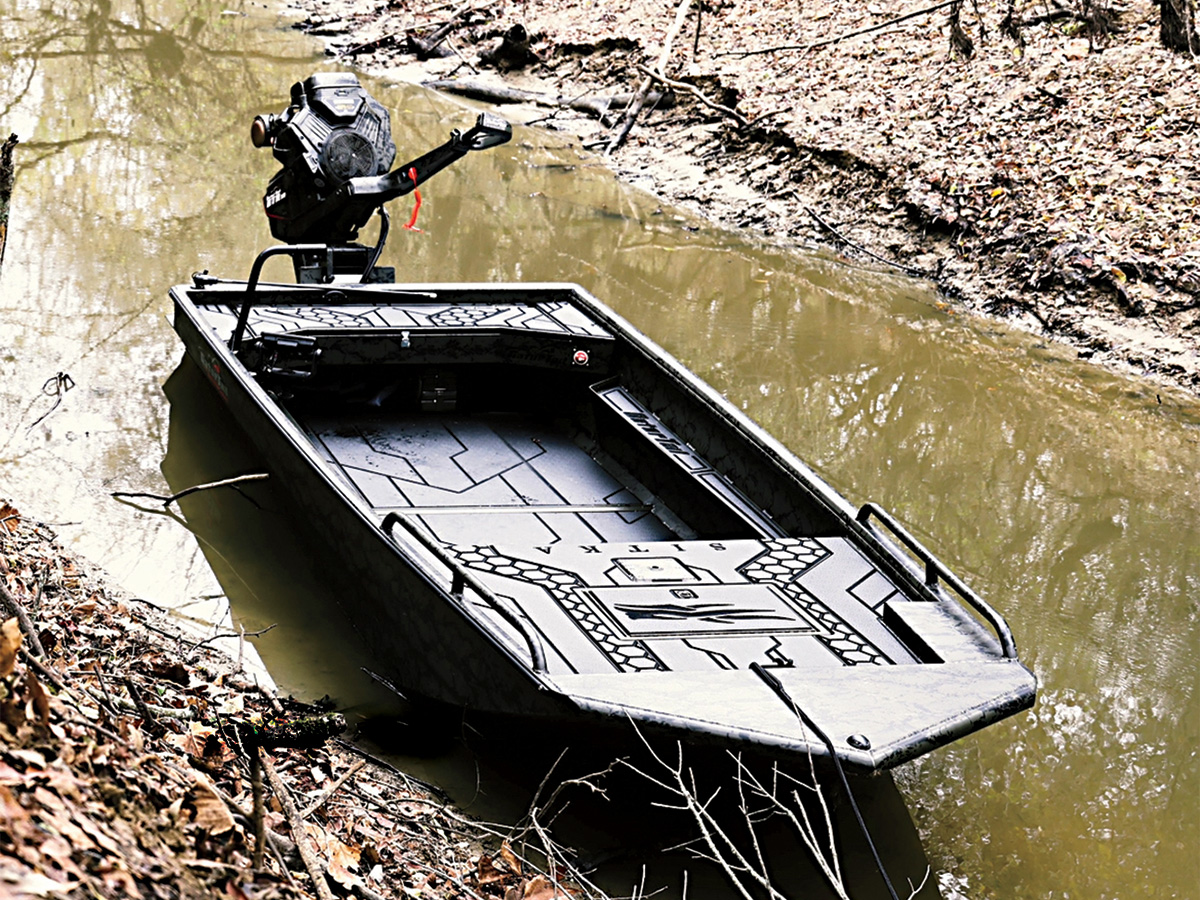
With a flat bottom, pointed bow, and mud motor, this boat can deliver waterfowlers to otherwise inaccessible hunting spots.
Alex Sherbinow: Old Town Sportsman Discovery Solo 119 Canoe
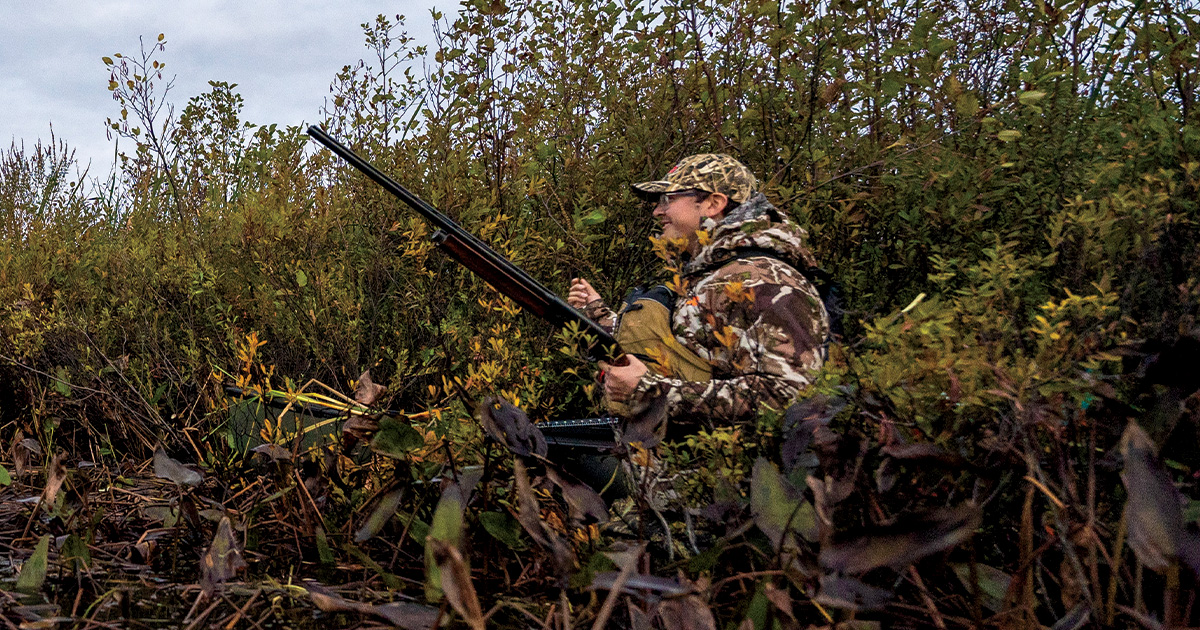
Sherbinow's lightweight one-man canoe is easy to portage, maneuver in shallow water, and hide among marsh grasses and other natural cover.
Alex Sherbinow has a unique approach for hunting marshy river systems in southeast Wisconsin. He uses a one-man canoe to access the shallowest, hardest-to-reach areas of marsh that he can find—areas that are typically overlooked or inaccessible to hunters in larger boats.
“I like to find unpressured areas,” Sherbinow explains. “I hunted out of a big boat for years and it was great, but we seemed to always be in competition for the best spots. Once I started to think outside of the box and use my solo canoe for access, it opened up a whole new world of opportunities for me. Others may get the first shots of the day because they’re on the main flyway, but over the course of the morning, I have seen my opportunities increase tenfold.”
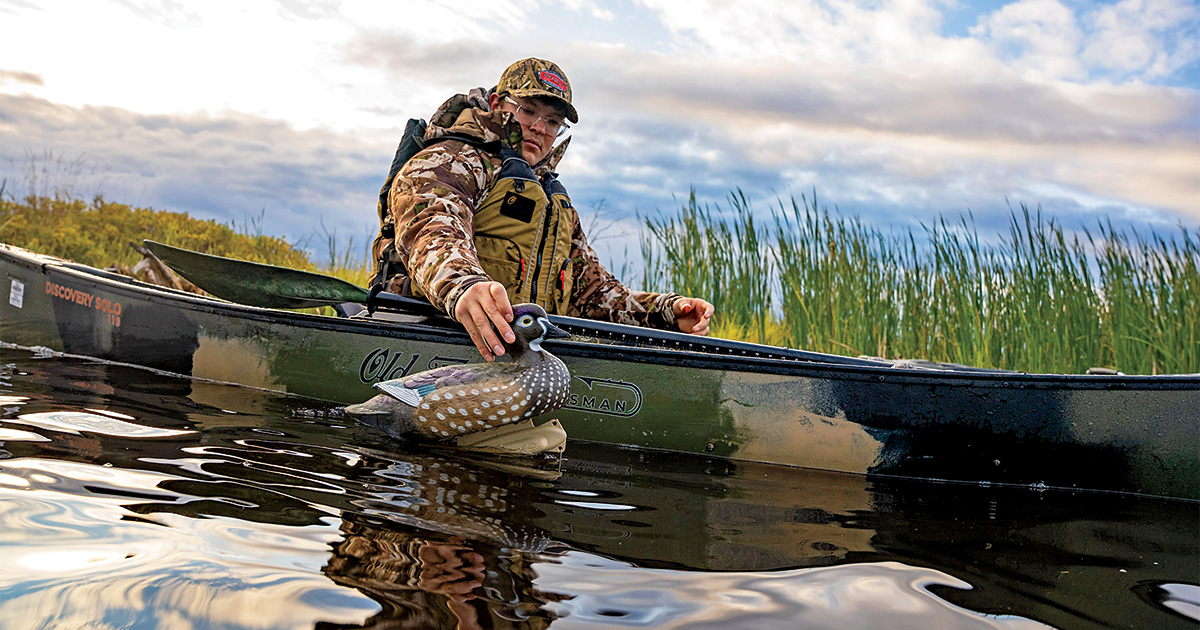
Sherbinow’s lightweight one-man canoe is easy to portage, maneuver in shallow water, and hide among marsh grasses and other natural cover.
Sherbinow’s boat of choice, the Old Town Sportsman Discovery Solo 119, serves his needs well. This highly versatile one-man craft is shaped like a canoe but paddles like a kayak, offering the best of both worlds. Weighing only 56 pounds, it can be portaged overland and pulled through shallow water or mud like a decoy sled. The camo paint also makes it easy to conceal in the marsh or along a riverbank.
“The areas I typically hunt are wide open, and the only cover are patches of cattails or other marsh vegetation,” Sherbinow says. “Because the boat is so small, I can pull it into the reeds without having to worry about bringing extra blind materials.
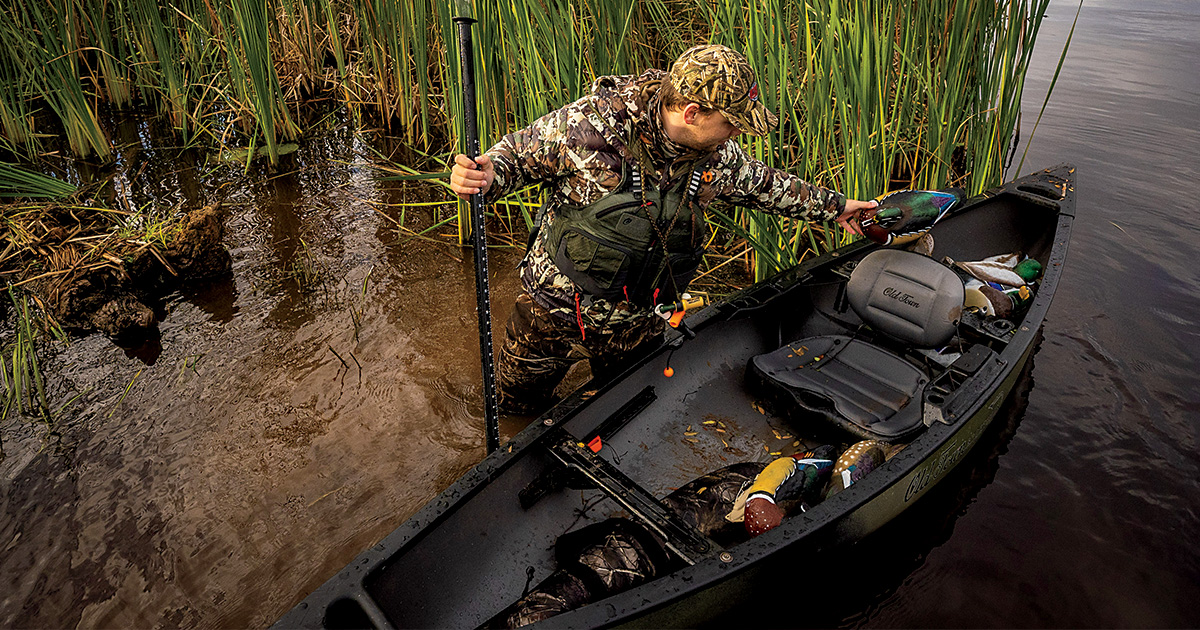
Small self-propelled duck boats allow hunters to get away from areas where birds are pressured by intense hunting activity.
Beau Brooks, Washington: Wild Hair 20-foot custom jet boat
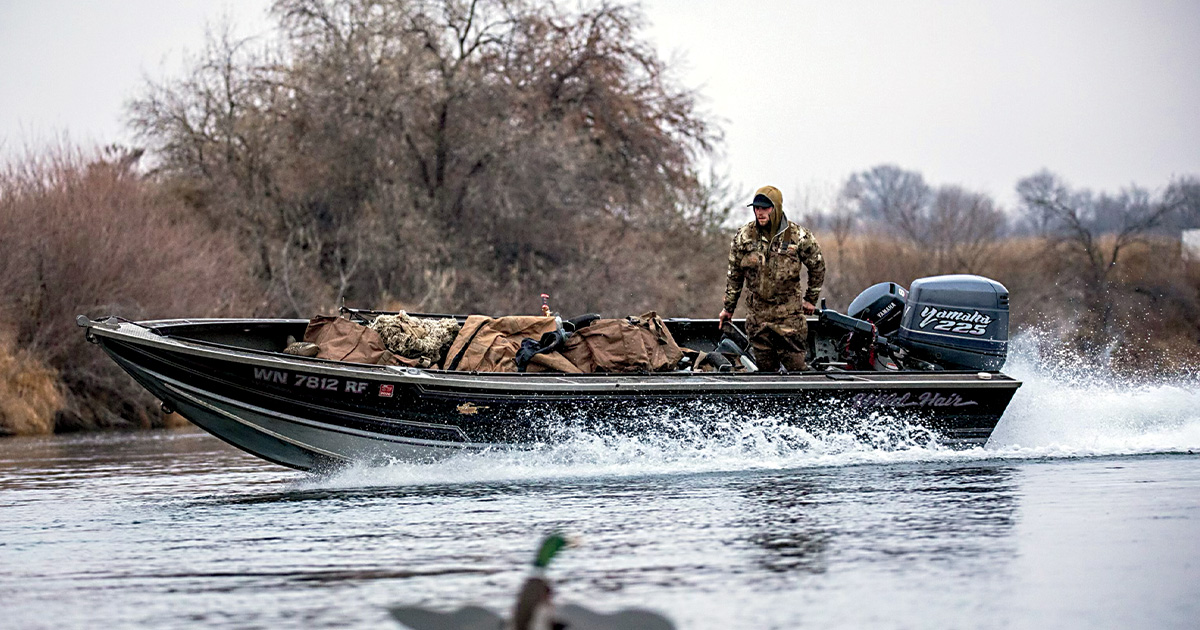
Beau Brooks hunts rivers and estuaries in the Pacific Northwest, where he operates in everything from swift current and waves to shallow coastal mudflats with large tidal fluctuations. To safely hunt such varied and challenging environments, Brooks uses a Wild Hair 20-foot custom jet boat powered by a 225-horsepower Yamaha outboard with a jet drive and tiller.
“You don’t use prop boats in the areas that I hunt,” Brooks says. “This is technically a salmon fishing boat, but I hunt such a diverse range of habitats, this setup gets me anywhere I need to go.”
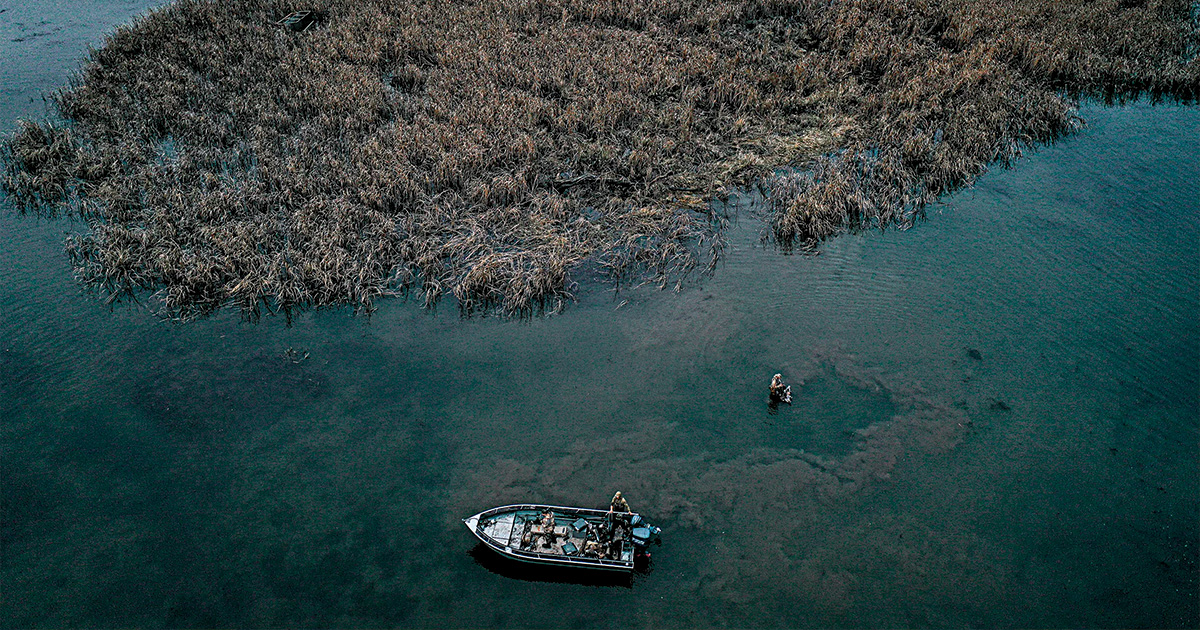
Using a large boat with a jet drive outboard, Brooks is able to safely access hunting spots throughout the Pacific Northwest.
While it might be unusual, Brooks stresses that having a tiller handle on the big 225 Yamaha is essential in the areas he hunts. “I get into some shallow, difficult spots where having the tiller allows me to make adjustments faster than I could with a console,” he says. “I’m definitely getting into places other hunters don’t go. Having a seaworthy boat is important too, because one minute it’s calm and the next it’s blowing 30 miles per hour with seven-foot swells.”
Brooks doesn’t hunt out of his boat. Instead, he brings along MoMarsh AT-X InvisiLay or Invisi-Man layout blinds with telescoping legs to conceal hunters along riverbanks, rocky islands, and emergent vegetation.
Features & Accessories:
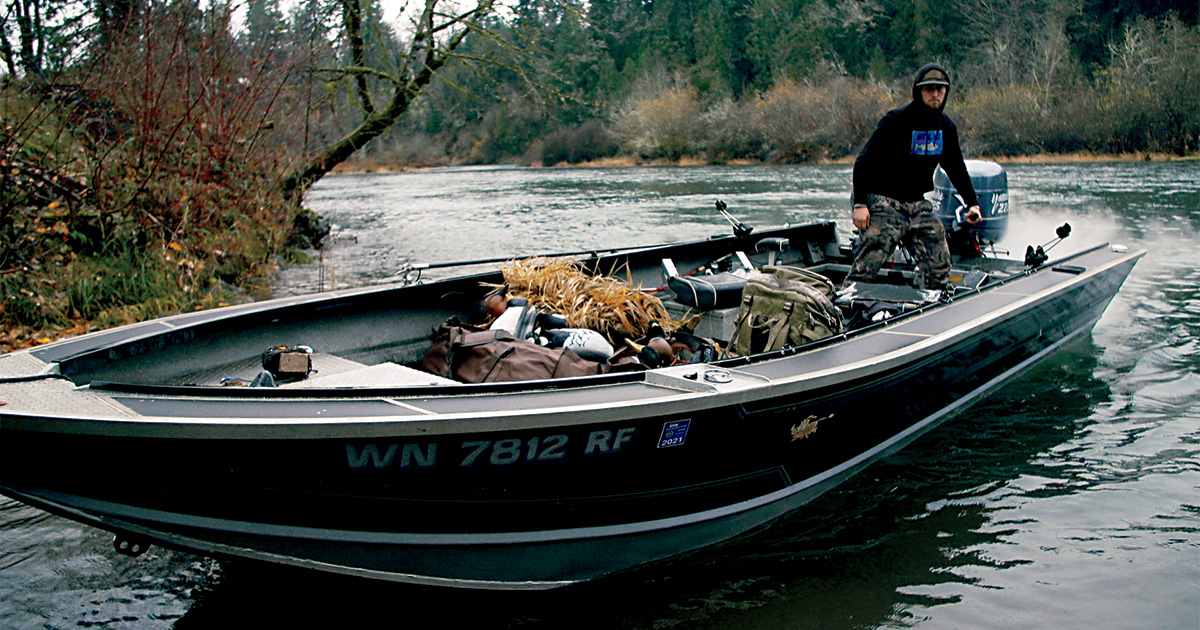
Originally designed for salmon fishing, the boat is now customized for hunting waterfowl in a variety of waters and habitats.
Jared Serigné, Louisiana : Go-Devil 18 x 60 surface drive
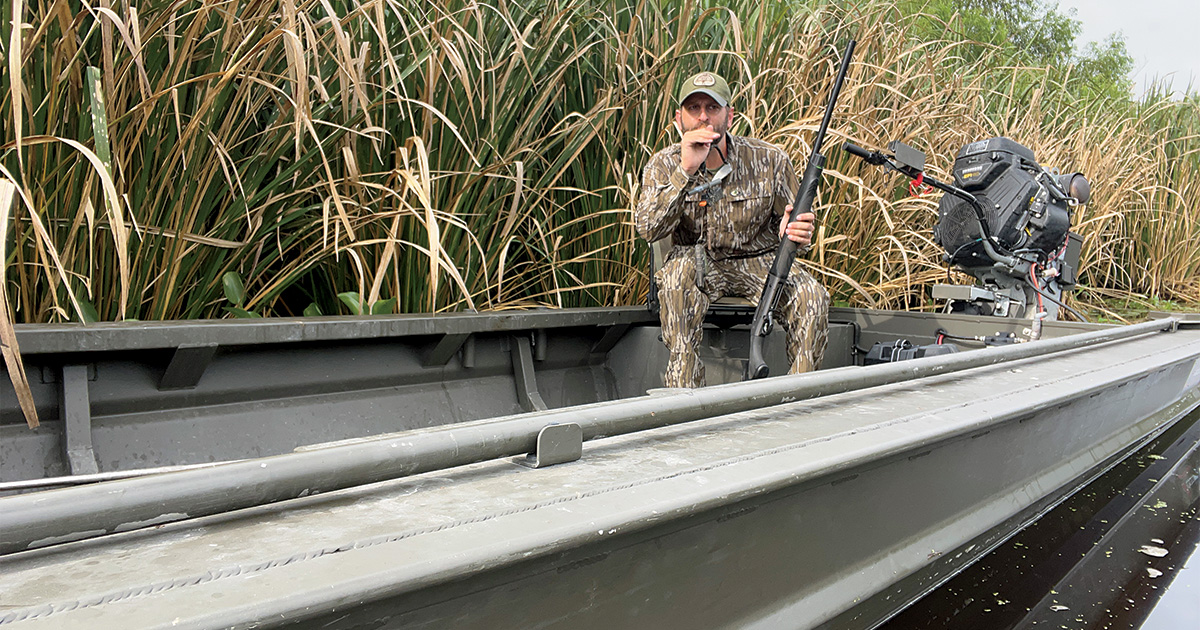
For Jared Serigné, who hunts the vast coastal marshes of southeast Louisiana, getting safely in and out of the hunting area is always a chief concern. He doesn’t have to cross large expanses of open water. Instead, he navigates narrow, winding bayous and shallow flats choked with aquatic vegetation. Go-Devil’s 18 x 60 Surface Drive Boat and 40 HP FNR Electric Trim motor are designed specifically for this kind of use—and a lot more.
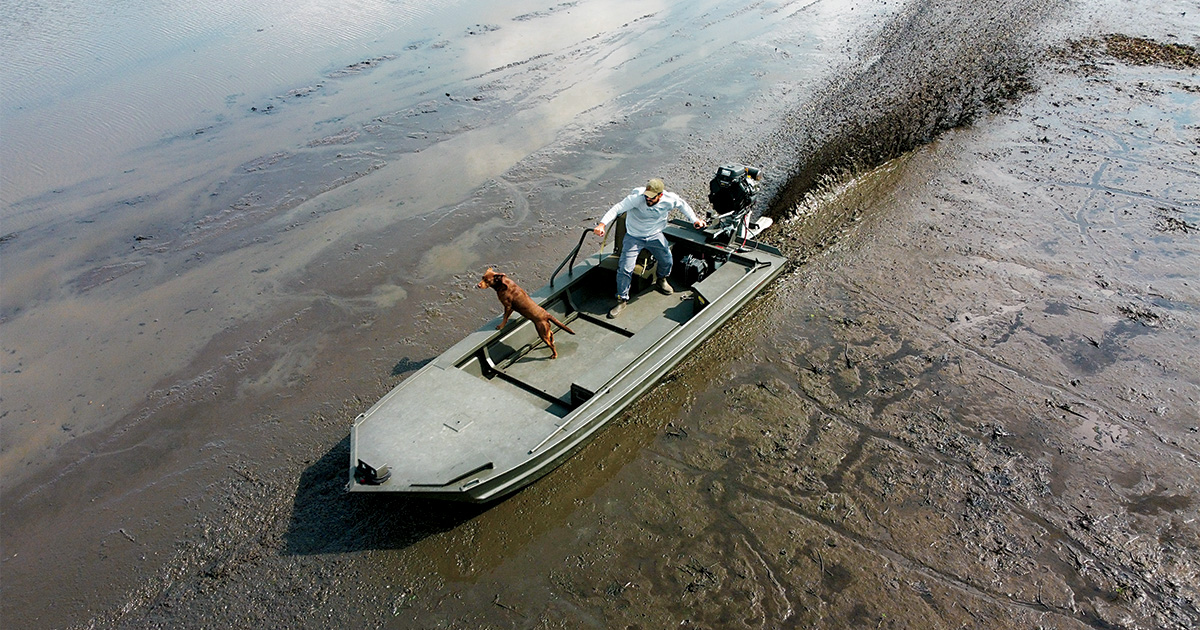
A surface-drive motor gets Serigné through southeast Louisiana’s shallow mudflats and swamps.
“Starting at the front, I like the pointed bow and slight V, and I have the extended fishing deck,” Serigné says. “This adds an additional 18 inches to the front, which is great when I’m fishing and for storing decoys. The six-inch catwalks are fantastic—I’ll never have another boat without those again. Finally, I love the open floor plan.”
Serigné says he has plenty of room for five hunters, their gear, and a couple of dogs, and the surface-drive motor provides all the horsepower he needs to get through the toughest swamps without bogging down. Rather than using a boat blind, he prefers to tuck into the roseau cane or other marsh vegetation. “We build a giant pull-in blind out of cane, and we hunt right out of the boat,” Serigné says. “The cane looks like an island in the marsh, and the ducks never see the boat.”
Features & Accessories:
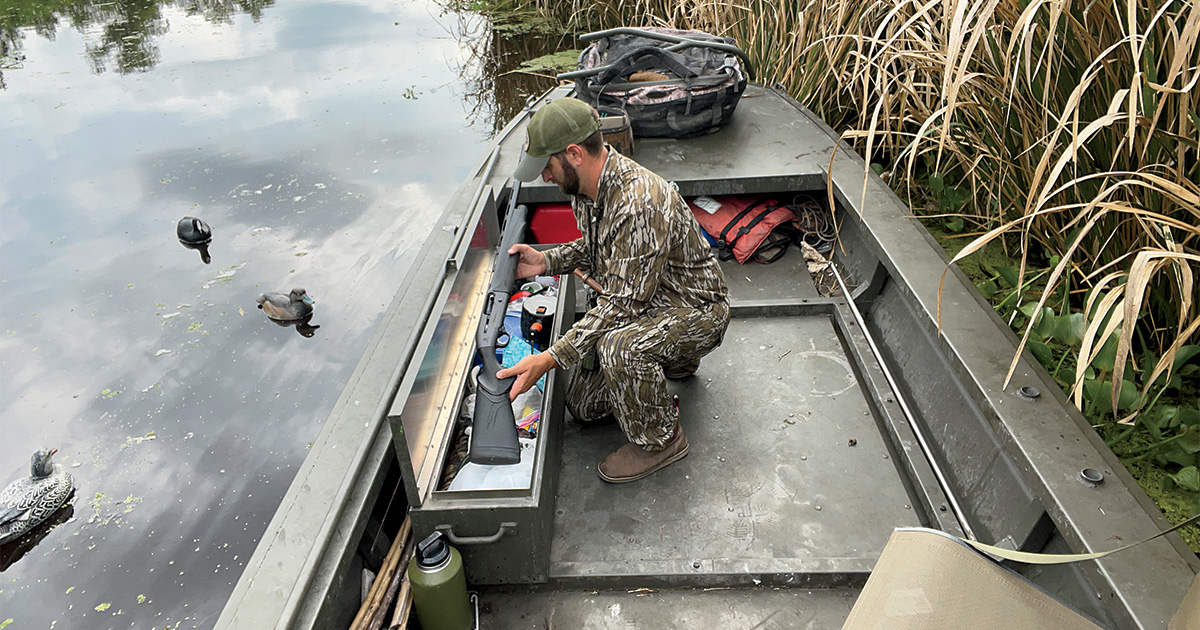
The boat’s open floor plan means there’s room for up to five hunters. Shotguns and other gear can be safely stowed in the gun box.
Ducks Unlimited uses cookies to enhance your browsing experience, optimize site functionality, analyze traffic, and deliver personalized advertising through third parties. By continuing to use this site, you agree to our use of cookies. View Privacy Policy